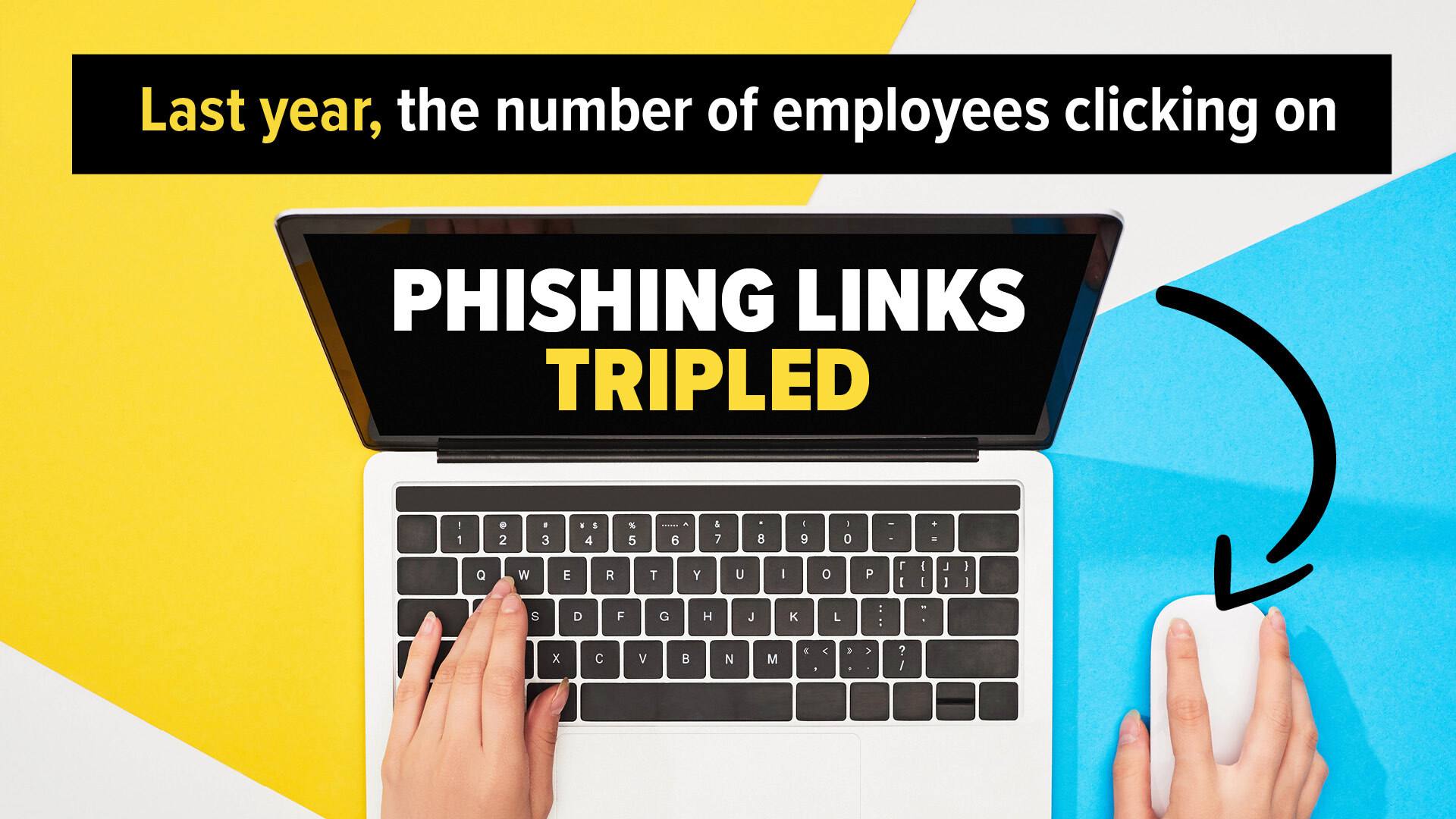
Have you considered how many phishing emails your employees encounter daily? The number might surprise you. In the past year alone, the rate at which employees click on phishing links has tripled, creating significant CyberSecurity risks for businesses of all sizes.
Phishing is a method used by cybercriminals to trick people into providing sensitive information, such as passwords or financial details. Attackers often disguise themselves as trusted entities, sending Phishing Emails that look legitimate. For example, an employee might receive an email appearing to come from a recognized source like Microsoft, prompting them to log into their account. Once login details are entered, the attackers immediately gain access to the employee’s account, potentially compromising your entire business system.
The growing frequency of phishing scams is not the only concern; these scams are becoming increasingly sophisticated, making them harder to recognize. While traditional email-based phishing remains common, criminals have expanded their methods. Now, phishing attempts are frequently encountered through fake links embedded in search engines, social media posts, online advertisements, and even website comments. Cybercriminals understand that many businesses train employees primarily on email-based threats, so they exploit other less-obvious channels.
Why Are Employees More Vulnerable Now?
One primary reason employees are falling for more phishing scams is due to fatigue. With the sheer volume of daily communications, it is challenging for anyone to remain constantly vigilant. Employees receive numerous messages throughout the day, and distinguishing a legitimate email from a phishing attempt can become overwhelming. Additionally, the increasing sophistication of these scams contributes significantly to the difficulty in detection. Cybercriminals now craft phishing emails and websites so convincingly that they closely resemble legitimate sites, making them extremely difficult to differentiate.
A prime target for these sophisticated phishing attempts includes platforms like Microsoft 365, which contain vast amounts of sensitive business information. When attackers successfully breach these platforms, the consequences can be severe, including data breaches, financial loss, reputational damage, and compromised customer trust.
Employee Training: Your First Line of Defence
Your employees can either form your strongest line of defence or become your most significant CyberSecurity risk. Properly trained employees can recognize potential threats before any harm is done. Conversely, uninformed employees can unintentionally open the door to cybercriminals with a single click. Effective Employee Training should educate staff on recognizing phishing attempts, verifying unexpected login requests, and identifying suspicious links.
Consistent and regular training sessions are crucial. Employees need reminders and updates because phishing tactics continually evolve. Keeping training materials current and relevant ensures employees remain aware and prepared for new threats. Training sessions should include practical examples of real-life phishing scenarios, equipping staff with the skills necessary to respond appropriately.
Beyond Employee Awareness: Implementing Additional Security Measures
While employee awareness is crucial, relying solely on human vigilance is not sufficient. CyberSecurity requires a multi-layered approach. Implementing Multi-Factor Authentication (MFA) provides an additional layer of security, significantly reducing the risk associated with stolen passwords. MFA requires an extra verification step beyond just the password, making it much harder for cybercriminals to gain unauthorized access.
Maintaining up-to-date software and implementing comprehensive CyberSecurity strategies also play vital roles. Regularly updated software helps protect against known vulnerabilities that attackers often exploit. Cybersecurity planning includes having policies and procedures that clearly outline what steps employees should take if they suspect a phishing attempt or data breach. This proactive approach helps contain incidents quickly, minimizing potential damage.
Practical Tips for Spotting Phishing Attempts
Employees should be aware of some common signs of phishing attempts:
-
Unexpected Requests: Emails or messages asking for login credentials unexpectedly should be treated with suspicion.
-
Urgency and Threats: Cybercriminals often create a sense of urgency or fear to prompt quick action without careful consideration.
-
Incorrect Email Addresses: Legitimate organizations typically have consistent and professional email domains. Phishing emails often contain subtle misspellings or slightly altered domain names.
-
Poor Grammar and Spelling: Many phishing attempts contain noticeable grammar errors or spelling mistakes, indicating a scam.
-
Unfamiliar Attachments and Links: Employees should avoid clicking on attachments or links from unknown or unexpected sources. Hovering over a link can reveal its true destination before clicking.
Encouraging employees to report suspicious messages immediately is another essential component of a robust CyberSecurity approach. Quick reporting allows the IT team to take immediate action, limiting exposure and protecting sensitive business information.
Future Trends in CyberSecurity: AI and Phishing Detection
One emerging trend in CyberSecurity is the use of Artificial Intelligence (AI) to detect and manage phishing threats. AI tools analyze emails and online activities, looking for patterns and behaviours consistent with phishing attempts. By identifying threats earlier, AI enables businesses to respond more effectively, reducing the risk of successful cyberattacks.
AI can also assist in classifying risk levels, prioritizing responses based on urgency and threat level. This technology ensures rapid detection and response, essential for minimizing potential damage from phishing attacks.
Building a CyberSecure Future
Phishing attacks are expected to increase in both number and complexity. Businesses must remain proactive, continuously updating their security practices, enhancing Employee Training, and employing advanced CyberSecurity technologies like AI. The goal is to reduce vulnerabilities by ensuring employees are well-informed and equipped to recognize and handle phishing threats.
Robertson Technology Group: Supporting Small and Medium Businesses
Robertson Technology Group, based in Victoria, BC, provides managed technology security and support solutions tailored specifically to small and medium-sized businesses across Canada. Our approach focuses on alleviating the burden of technology management, allowing businesses to operate smoothly without needing an on-site IT team.
By offering personalized customer service and flexible pricing, we build genuine partnerships with our clients, working closely to understand their unique needs and challenges. Our commitment to innovation includes adopting the latest technologies, such as AI-driven CyberSecurity solutions, to proactively identify and respond to security risks.
At Robertson Technology Group, we strive to deliver secure, reliable, and efficient technology support, empowering businesses to focus on growth and success.

